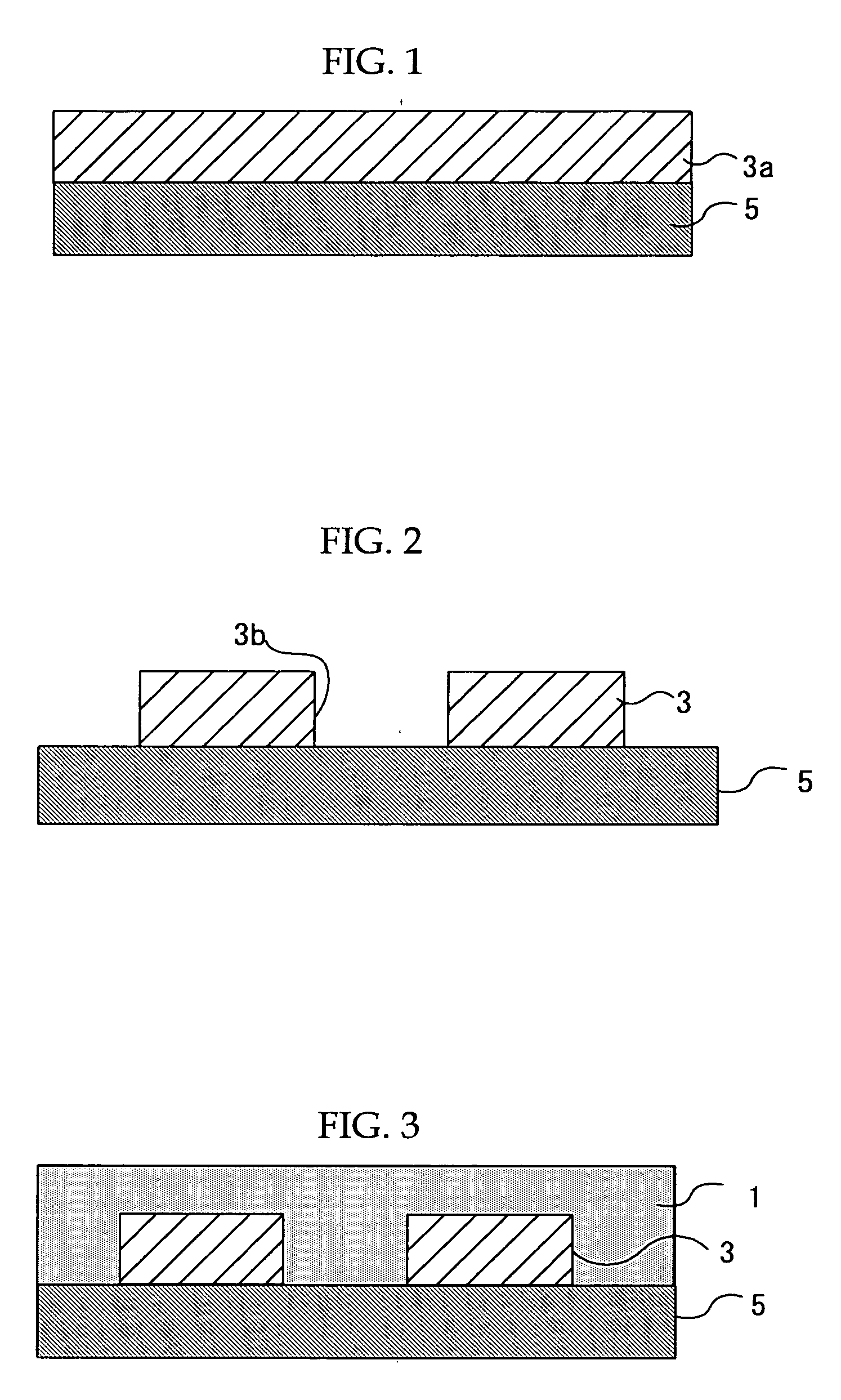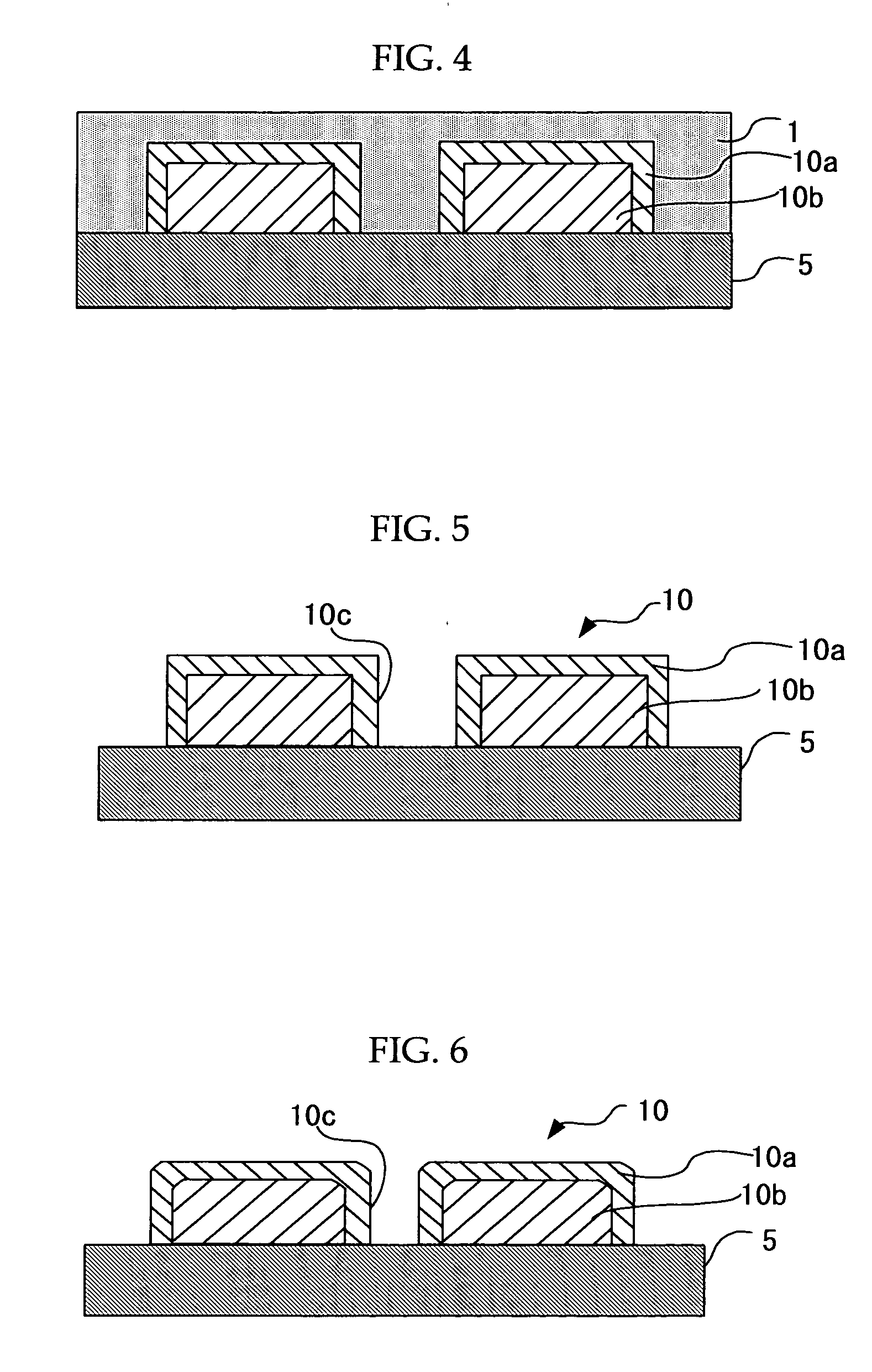Process for forming resist pattern, semiconductor device and manufacturing method for the same
- Summary
- Abstract
- Description
- Claims
- Application Information
AI Technical Summary
Benefits of technology
Problems solved by technology
Method used
Image
Examples
example 1
—Preparation of Resist Pattern Thickening Material—
[0205]A resist pattern thickening material containing the following ingredients was prepared:
(1) Polyvinyl alcohol resin (“PVA-205C” by KURARAY Co., Ltd.)
[0206]. . . 4 parts
(2) 2-Hydroxybenzyl alcohol (by Aldrich)
. . . 1 Part
(3) Surfactant (“TN-80” by ADEKA)
. . . 0.06 Parts
(4) Purified water
. . . 96 Parts
—Formation of Resist Pattern—
[0207]An ArF acrylic resist (“AR1244J” by JSR) of 220 nm thickness was applied on an 8-inch silicon substrate (manufactured by Shin-Etsu Chemical Co., Ltd.) on which an antireflective film (“ARC-39” by Nissan Chemical Industries, Ltd.) had been formed by coating. The ArF acrylic resist was exposed to ArF excimer laser using an ArF excimer exposure device to form a hole pattern with an initial pattern size of about 94 nm (pitch=200 nm).
[0208]The resist pattern thickening material prepared above was applied on the hole pattern by spin coating at 1,000 rpm for 5 seconds and then at 3,500 rpm for 40 seconds,...
example 2
[0221]As shown in FIG. 9, an interlayer dielectric film 12 was formed on a silicon substrate 11 and, as shown in FIG. 10, a titanium film 13 was formed on the interlayer dielectric film 12 by sputtering. Next, as shown in FIG. 11, a resist pattern 14 was formed by known photolithography and the titanium film 13 was patterned via reactive ion etching while using the resist pattern 14 as a mask, forming an opening 15a. Subsequently, the resist pattern 14 was removed by reactive ion etching and, as shown in FIG. 12, an opening 15b was formed in the interlayer dielectric film 12 while using the titanium film 13 as a mask.
[0222]The titanium film 13 was removed by wet process and, as shown in FIG. 13, a TiN film 16 was formed on the interlayer insulating film 12 by sputtering, followed by deposition of a Cu film 17 on the TiN film 16 by electroplating. As shown in FIG. 14, chemical and mechanical polishing (CMP) was then performed, leaving barrier metal and a Cu film (first metal film) on...
PUM
 Login to View More
Login to View More Abstract
Description
Claims
Application Information
 Login to View More
Login to View More - R&D
- Intellectual Property
- Life Sciences
- Materials
- Tech Scout
- Unparalleled Data Quality
- Higher Quality Content
- 60% Fewer Hallucinations
Browse by: Latest US Patents, China's latest patents, Technical Efficacy Thesaurus, Application Domain, Technology Topic, Popular Technical Reports.
© 2025 PatSnap. All rights reserved.Legal|Privacy policy|Modern Slavery Act Transparency Statement|Sitemap|About US| Contact US: help@patsnap.com



